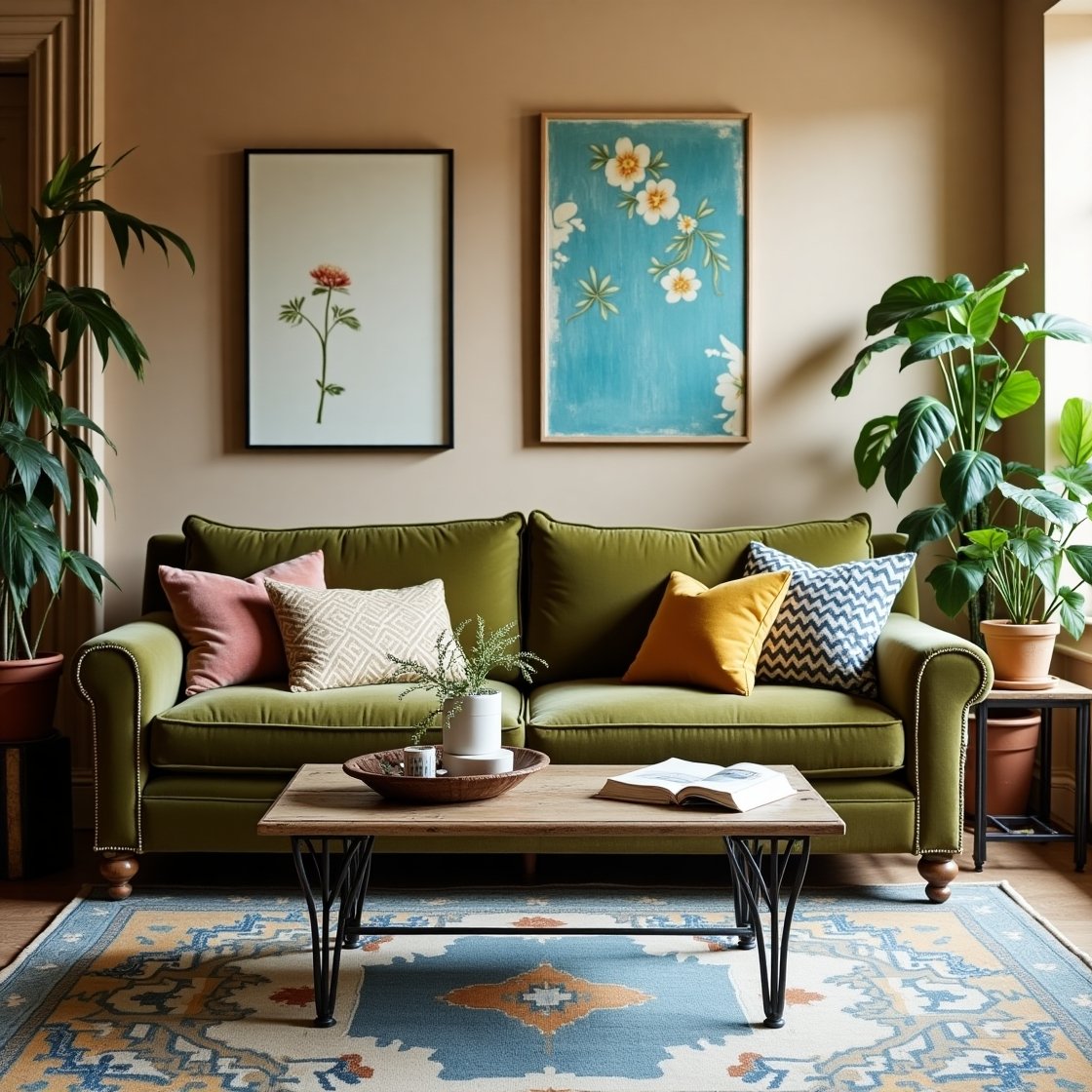Mixing patterns in interior design can turn a plain room into a vibrant, layered, and personality-filled space. But done poorly, it can also lead to clutter and confusion. The secret is learning how to combine prints with purpose, so your decor feels balanced—not busy.
In this article, you’ll learn how to confidently mix patterns in any room of your home—creating a cohesive, stylish look that feels energetic, not overwhelming.
1. Choose a Cohesive Color Palette First
Before choosing any patterns, start with a unified color palette.
Tips:
- Pick 2–3 main colors and 1–2 accent tones
- All patterns you use should contain at least one of these colors
- Stick to similar tones (warm or cool) for harmony
- Use neutral backdrops (white, beige, gray) to ground bold patterns
Color is what holds your patterns together. Without it, they’ll compete instead of complement.
2. Mix Different Pattern Types for Contrast
Don’t layer three florals or three stripes—that’s how things get messy. Instead, combine different types of patterns.
Effective pairings:
- Floral + geometric
- Stripe + polka dot
- Plaid + abstract
- Animal print + solid texture
- Tribal + botanical
Varying the type of print gives each pattern its own space to shine.
3. Vary the Scale of Your Patterns
Pattern size is just as important as the pattern itself. Combining prints of the same scale creates visual chaos.
Here’s how to balance:
- Choose one large-scale pattern (e.g., on a rug or curtain)
- Add a medium-scale print (like on pillows or bedding)
- Finish with a small-scale detail (e.g., napkins, art, or decorative accents)
This layering creates depth and rhythm—like music for the eyes.
4. Use Solids to Break Things Up
Think of solids as the pause between patterns. They allow the eye to rest and give structure to your styling.
Try:
- Solid color throws, pillow covers, or curtains
- Neutral furniture pieces
- Plain bedding between patterned sheets and pillows
- Solid walls when using printed wallpaper or art
Solids anchor the space and prevent overstimulation.
5. Repeat Patterns Across the Room (Strategically)
To keep the space feeling cohesive, repeat the same pattern in small doses across the room.
Examples:
- Use the same stripe from the rug in a throw pillow
- Repeat a floral print from a curtain in a small framed artwork
- Pull a color from a bold pattern into a lamp or vase
This technique ties everything together without looking matchy-matchy.
6. Add Texture to Balance Flat Patterns
Texture is your secret weapon when using lots of print. It creates contrast and dimension without adding more visual patterns.
Ideas:
- Woven or knitted blankets
- Linen or velvet cushions
- Rattan or cane furniture
- Wool rugs or leather poufs
- Textured ceramics or wooden decor
Textures keep your patterned space feeling warm, grounded, and intentional.
7. Create a Pattern “Moment”
Instead of spreading multiple patterns randomly around a room, choose one area to focus them.
Pattern-rich zones could be:
- A bed with mixed pillow patterns
- A reading nook with printed cushions and a bold rug
- A patterned entry bench with coordinating wall art
- A gallery wall of framed patterned paper or fabric
This creates impact without scattering visual noise.
8. Use Patterned Accents on a Neutral Base
The easiest way to master pattern mixing is to start with a neutral base—walls, large furniture, and flooring—and build from there.
Then add:
- Patterned rugs
- Curtains with soft prints
- Pillows in complementary patterns
- Art or accessories in bold designs
This method gives your patterns a clean foundation to pop from.
9. Keep Your Style Consistent
Not all patterns play well together. Choose patterns that match the overall vibe of your home.
For example:
- Boho: tribal, botanical, ethnic, and abstract
- Modern: geometric, stripes, minimal prints
- Traditional: florals, toile, damask, plaid
- Coastal: stripes, watercolor, organic motifs
Mixing within a style family helps everything feel curated and consistent.
10. Trust Your Eye and Edit As Needed
When in doubt, step back and observe. Take a photo of the room to see how the patterns are working together.
Ask yourself:
- Does anything stand out too much or disappear?
- Is one pattern overpowering the rest?
- Is there enough solid space between the prints?
Trust your intuition—and don’t be afraid to remove one pattern if it throws off the balance.
Bold, Balanced, and Beautiful
Mixing patterns doesn’t have to be scary. When done right, it brings life, movement, and personality into your space. It’s an art form—but one that anyone can learn.
Remember:
- Anchor everything with a consistent color palette
- Mix different types and scales of patterns
- Layer in solids, texture, and repetition
- Trust your eye, edit when necessary, and have fun
Your home is your canvas—now go fill it with pattern, purpose, and style.
